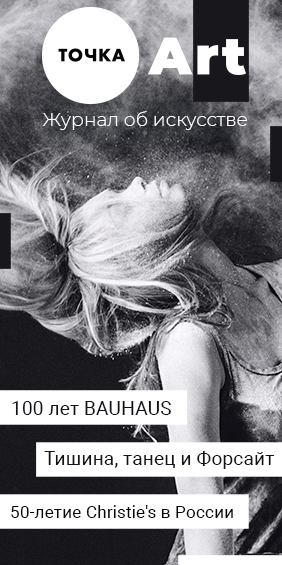Summer, Winter, and The Rite of Spring: The Seasons by Frank Moon and Arthur Pita
On May the 29th 1913 the premiere of The Rite of Spring by Igor Stravinsky took place in Paris. 110 years later the British composer Frank Moon together with the choreographer Arthur Pita created a unique interpretation of the ballet and introduced it to Moscow audiences. Point ART Magazine covers the new production which is named «Summer, Winter, and The Rite of Spring».
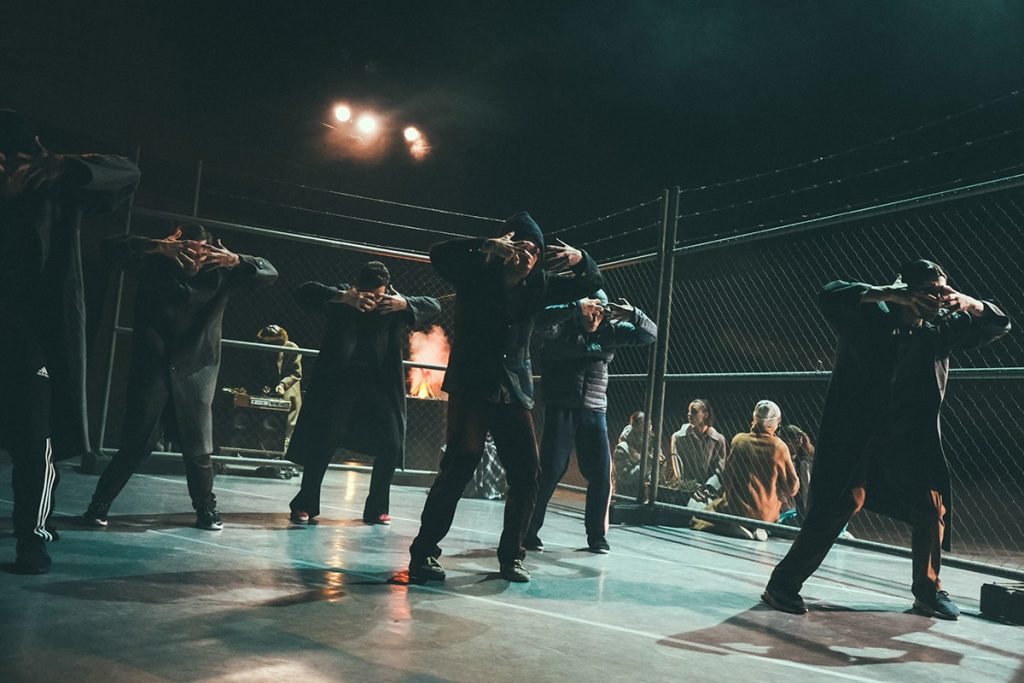
An endless expanse of green hills covered with heather, and the meadows of Cornwell stretched along the shores — that’s what surrounded Frank Moon throughout most of his life. Perhaps, there could be no better environment for learning to play folk instruments. The guitar, oud (an Arabic lute), balalaika, dutar, mandolin — the list can go on and on and still wouldn’t cover all the instruments this remarkable composer can play.
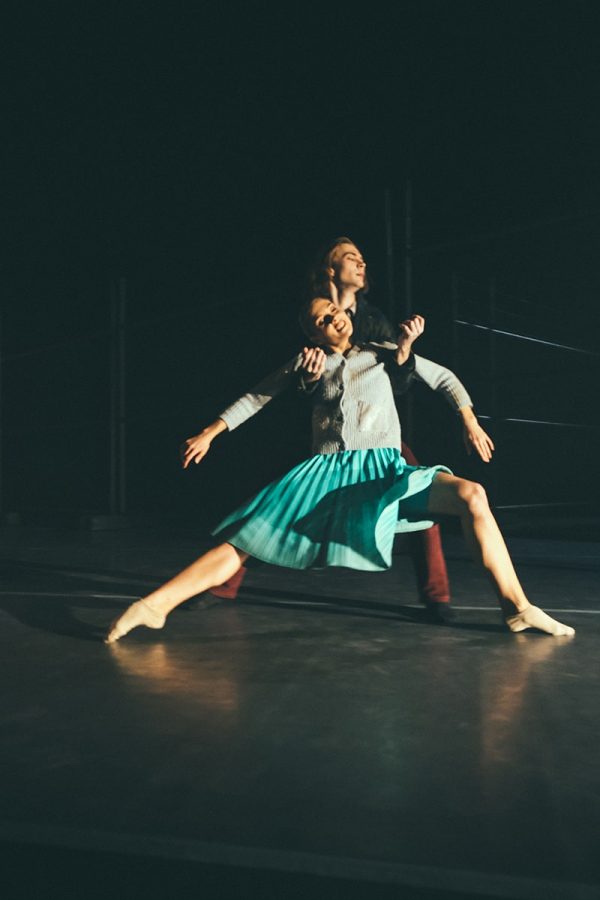
He was born and bred far away from the hustle and bustle of city life. Frank’s father, the only musician in the family at the time, keenly supported and encouraged his son’s creative quest, whether it be art or music. Frank shares the memories about his father with great warmth: «I still have his piano in my studio, and I do keep all his notes and music scores. They would often help me out and become a source of artistic insights».
After having left his parents’ home, Frank Moon entered Royal Birmingham Conservatoire and graduated with honours. There he finally established himself, successfully reconciling teaching and performing careers. However, in 2010 things took a turn when Frank met the choreographer Arthur Pita. This meeting sparked a long-lasting and fruitful collaboration of the two masters. «Soon after we met, Arthur phoned me and asked if I was interested in writing music for his staging of The Metamorphosis for the Royal Theatre. Feeling thrilled to bits, I immediately said «yes!». Thanks to our partnership, I constantly improve and acquire invaluable skills — for instance, writing an orchestral score for Salome ballet or learning to play balalaika — as was the case with our work on The Rite of Spring.

Any ballet conceived by Arthur is always like a world of its own — fascinating yet frightening at times. For example, the events from The Little Match Girl first occur in 19th-century Italy — and then, all of a sudden, they continue unfolding on the surface of the Moon! The Tenant ballet is a pure surrealistic thriller where just an ordinary flat turns into sheer hell for its dweller. Summer, Winter, and The Rite of Spring is an interpretation of Igor Stravinsky’s ballet complemented by the history of the Slav commune, which, step by step, revives a broad array of traditions long forgotten.
Arthur Pita had been long cherishing the idea of staging The Rite of Spring but at the same time felt reluctant to share stage with a different ballet, which was the reason for Frank Moon to compose two more parts (The Summer and The Winter) turning the performance into a truly bold choreographic manifestation. «Our primary idea lay in writing an arrangement of The Rite of Spring using solely folk instruments: ocarinas (a woodwind musical instrument), balalaikas, bagpipes, gusli (a kind of zither)… However, quite soon we had to abandon this idea as the copyright simply didn’t allow us to do this (it still hadn’t been 70 years since the death of Stravinsky). Thus, we eventually decided to leave the original ballet untouched and focus on the remaining two parts.
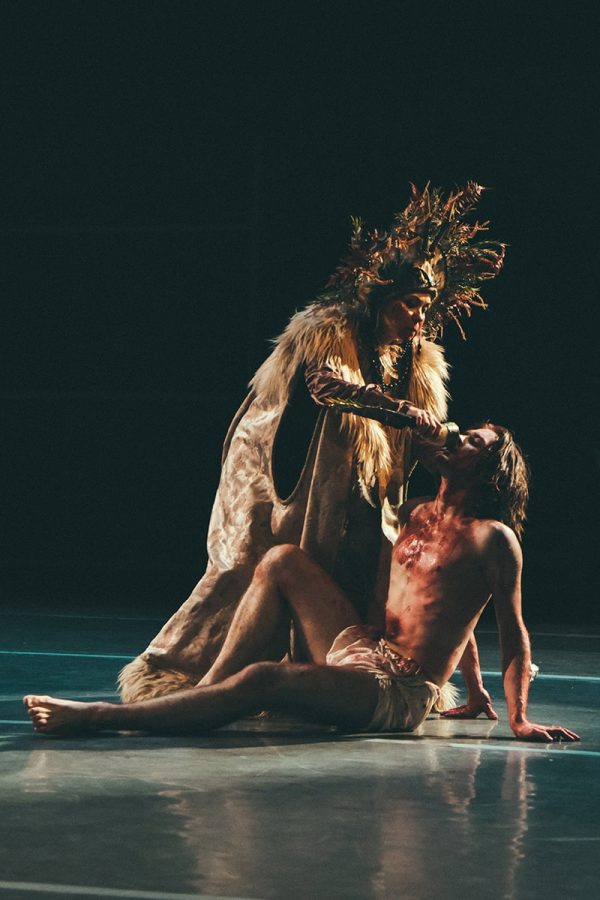
Arthur wanted the world of The Rite of Spring to be Slavic — but at the same time, to be connected with ancient pagan rituals and their future echoes. But what is the music supposed to be like? I employed all the sources I could access, gathered a wealth of musical references and thoroughly examined Stravinsky’s orchestration trying to get a rough idea of what Slavic music sounds like. Once, almost on the verge of despair, I suddenly remembered that a long, long time ago some folk musicians from Russia had actually visited our city. They looked ultimately authentic: their traditional costumes and instruments left a particularly strong impression on me. Fortunately, my father managed to complete a few arrangements of their piano pieces. There was nothing like those melodies — so full were they of piercing sadness. That was just what we were looking for, I thought to myself. Eventually, one of these motives served as a prototype to the song from The Winter movement and as an accompaniment to a delicate choreographic episode.
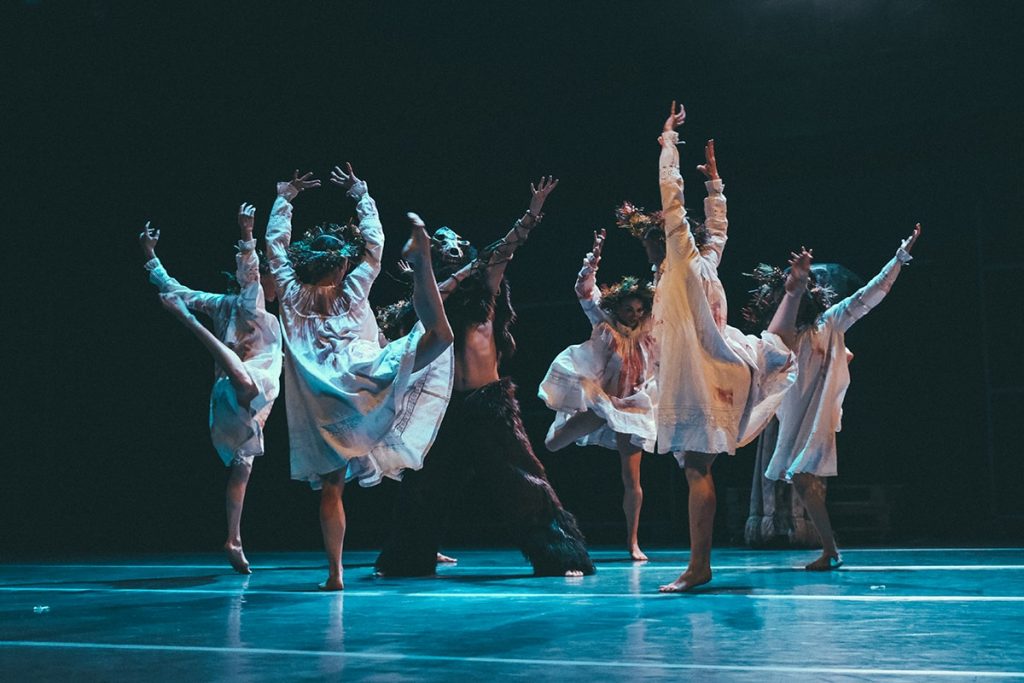
The events of the performance begin long before dancers actually set foot on stage. The audience is exposed to a vision which could hardly be called optimistic yet is undoubtedly impressive: in the very centre of stage there is a sacrificial stone veiled by plumes of smoke coming from some kind of censer. Grim sentries dressed in black are in charge of the untouchability of the holy shrine — and so is a mesh fencing separating each spectator from the world of the commune.
The Summer
The sentries open the gates thus inviting the audience to participate in the resurrection of traditions long forgotten. Being strictly watched by a warden, the young men and women immerse in ingenuous games, which change one another when the warden commands. Here they are, playing Roucheyok (The Current), glancing at each other flirtatiously through a pocket mirror, and weaving braids of red ribbons. However, neither folk dances nor sacred words help them recollect the right ritual.
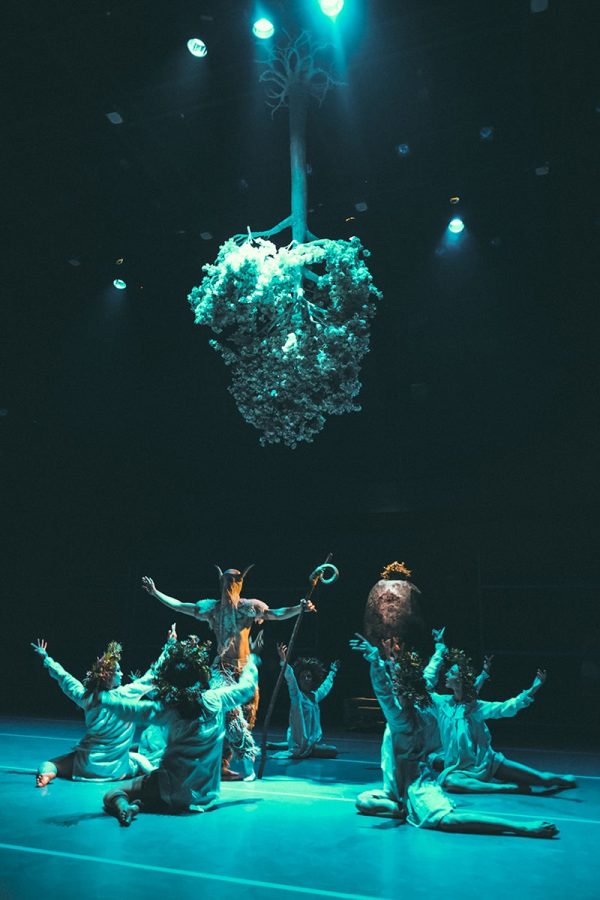
«Music-wise, this part is the simplest,» says Valeriya Savvina, a ballet dancer at «Ballet Moscow». «It has a clear rhythm, which doesn’t in the least rob it of its beauty and elegance. That’s why when on stage, we can’t help but enjoy our work. This movement was apparently inspired by traditional Balkan motives which have infused the part with pure joy and light-heartedness».
Lest the spectator gets completely lost in this whirlpool of madness, at the end of each part there comes the warden, gravely walks to the record player and puts on the next record, thus indicating the change of «seasons».
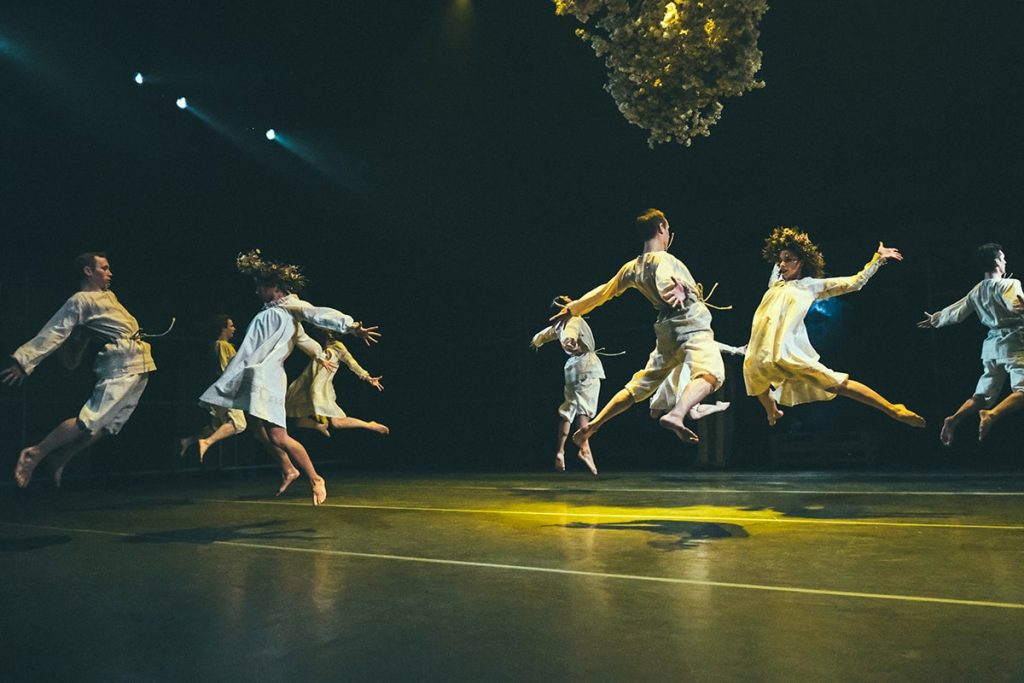
The Winter
Mysterious rites continue to awake. The events are set on the different sides of the fencing which has divided the commune into a male and female sections. Although The Winter represents a more dramatic part of the performance, a graceful Adagio is also to be found in this movement as though reminding the audience of eternal love which has neither boundaries nor wardens.
Frank tells that he used a lot of long-breathed chords smoothly flowing one into another and therefore symbolising frozen life waiting for spring. «I carefully studied Stravinsky’s harmonies and partly quoted them as though dropping a hint about their further growth and melodic development. Weaving them into the long-breathed chords, I tried to create an image of seeds enveloped in ice, which will later burst into spring».
The Rite of Spring
The seeds planted by Frank Moon transform into a mesmerising choreographic show — dark and grim, terrifying and hypnotising. The wardress here takes on the role of the High Priestess. She is accompanied by her loyal lackeys: eccentric Asasello who, tapping his knotty staff against the ground and wriggling with malice walks every step of the march; croppers who can’t wait to harvest their ritual crops, and Bear-the-Butcher the who has taken The Chosen One’s life.
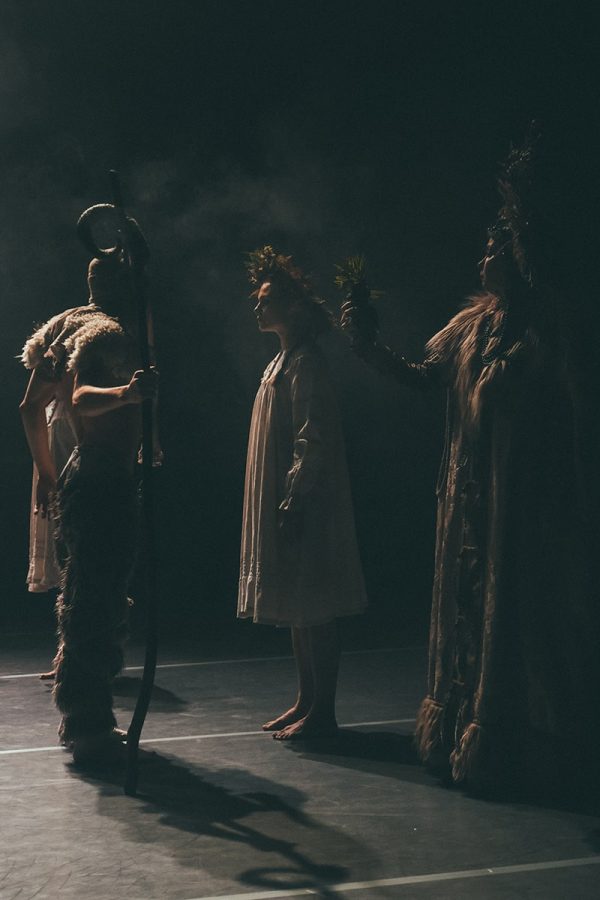
The white clothes and wreaths on women’s heads provoke an unambiguous premonition of a looming massacre. The climax arrives with the bitter agony of The Chosen One, which could be justly compared to the Passion of the Christ. The sublime choreographic embodiment makes your blood run cold. Ironically, the notes in the bass line at the very end of the piece are arranged in the following order: D, E, A, D. DEAD. Is it a mere coincidence?
The Epilogue
Although the previous movement came to a fairly pessimistic finale, Arthur Pita and Frank Moon still offer a hope: life hasn’t ended. The sensuality and eroticism of the following episode slightly soothe the tragedy of sacrifice — yet leaving an aftertaste of futility of our earthly existence.
As Valeriya Savvina says, «… The Rite of Spring is a truly perplexing opus itself. If in Frank Moon’s Summer the notes are your younger brothers who you sometimes treat in a condescending manner, in Stravinsky’s work they are the old wise men who you should listen to with great care trying to follow every single word, even a silence.
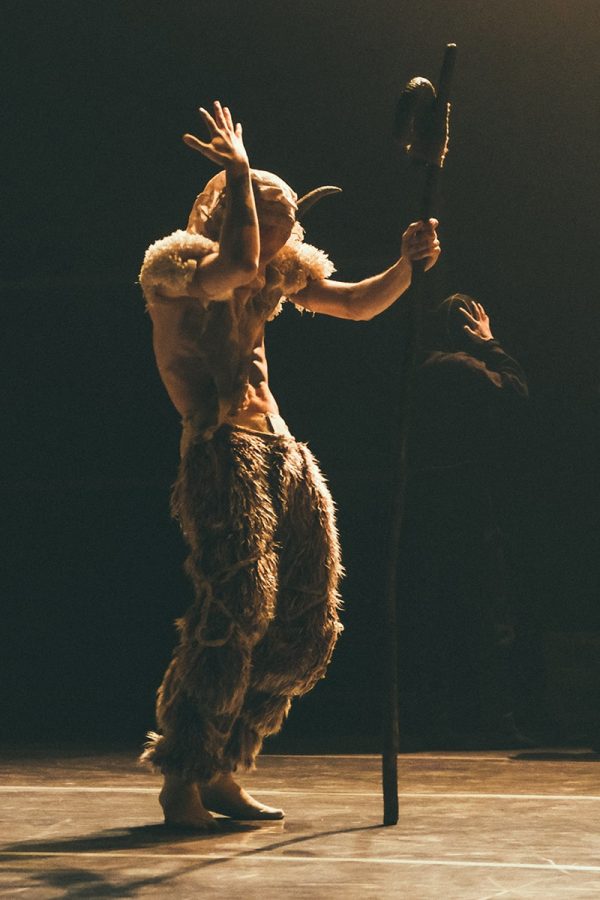
Summer, Winter and The Rite of Spring is a unique synthesis of the classic and the modern, covering both music and ballet. One might wonder how the Maestro would appreciate such a daring move. Frank hopes that «even though Stravinsky would never have to search for words and had always preferred to voice his true feelings, he might have been interested in our work. We tried really hard and treated his oeuvre with massive respect and reverence towards his remarkable talent».

